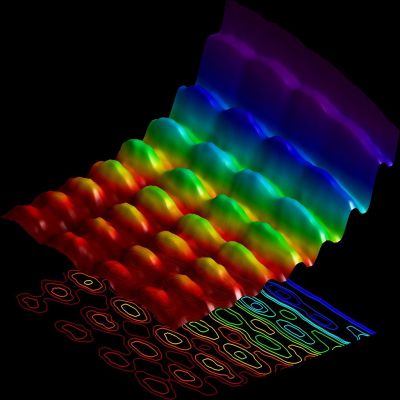Quantum switches and single-photon waveguides

Light imaged as both a particle and wave
By EurekAlert press release – Fabrizio Carbone/EPFL – Usage Restrictions: None (http://www.eurekalert.org/multimedia/pub/87545.php) [CC BY 4.0 (http://creativecommons.org/licenses/by/4.0)], via Wikimedia Commons
Much as a light switch controls current flow to a lighting device, an optical switch reroutes incident light. Novel quantum optical switches have rerouted single incident photons with implications for future photonics and quantum computing devices.
Quantum switches will form the cornerstone of future quantum networks and quantum communication applications. Scientists explored the possibilities of single-atom control of the output port of incident light with EU support of the project 'A quantum switch for light' (QUSWITCH). The switching device was an optical microresonator, a cavity made of reflecting surfaces separated by an optical medium.
Scientists exploited a bottle microresonator supporting whispering gallery modes. Such a microresonator enables strong coupling such that a single atom can drastically change the transmission properties of the resonator. Input and output of light was facilitated by very-low-loss tapered optical fibres.
Scientists first developed the technique to deliver and detect the presence of a single Rubidium 85 atom at a distance of about 100 nm from the resonator surface. With this control system in place, researchers began to study atom-resonator coupling using spectral methods. Serendipitously, they discovered that, contradictory to established theory and predictions, due to the strong confinement of light the atoms emitted light in only one direction. This led to experimental demonstration of novel nano-scale optical waveguides. For example, scientists created a fibre-integrated optical switch in which a single atom controls the output port of the whispering gallery-mode microresonator.
Further, due to the inherently non-linear nature of the atom-resonator coupling, the photon number can be utilised to carry out different functions. The team was able to route single photons to a different port than two simultaneously arriving photons.
In addition, scientists exploited the fact that the resonator generates a different phase shift in the output light along the coupling fibre depending on the number of incident photons. Scientists exploited this phenomenon to generate entanglement between two incident photons.
The novel light-matter interaction demonstrated in QUSWITCH experiments paves the way to innovative integrated micro-scale photonic devices and optical detection or sensing schemes. The maximally strong photon-photon interaction is the foundation for practical application of deterministic quantum gates and information processing. Thus, the project has provided new insight of fundamental interest and of relevance to innovative future applications.
published: 2015-06-12

